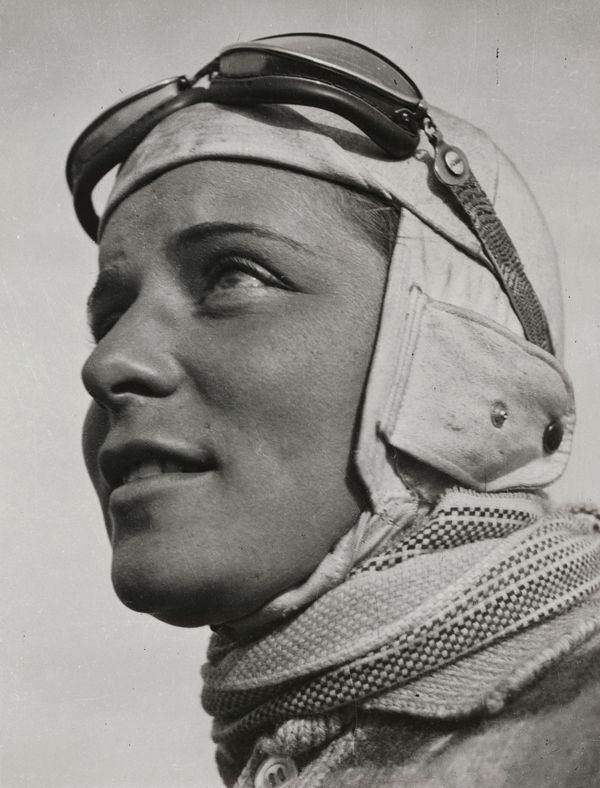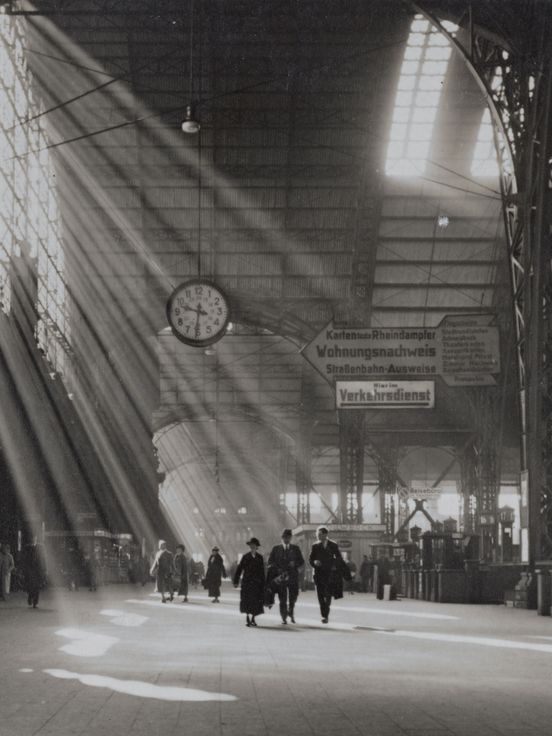The Berlinische Galerie has been hosting the Thomas Friedrich Research Grant in Photography since January 2014. Initiated and funded by the designer, editor, collector and historian of photography Manfred Heiting (The Heiting Library Trust), it enables a young researcher to spend a year working with a particular set of holdings in the Photography Collection. The findings are published in a Research Report. In 2018 bursary-holder Maximilian Westphal investigated Fritz Eschen (1900 – 1964). Eschen’s work, largely unknown today, is on show until 24 February 2020 in its own room in the permanent exhibition.
Maximilian Westphal founded his research on 721 photographs and the copious correspondence with Fritz Eschen kept in the archives of the Berlinische Galerie. Photography researchers have so far valued Fritz Eschen primarily for his portraits of public celebrities and his moving pictures of Berlin in the immediate post-war period.
Fritz Eschen’s career took off in the early 1930s on a promising note. However, when the Nazis took power in 1933 it was abruptly terminated because of his Jewish origins. The only thing that saved him from deportation was his marriage to Gertrude, who was not Jewish. Although he had few opportunities to work under the Nazis and suffered discrimination and oppression, many of his pictures continued to appear in various publications.
When the Nazi regime was toppled in May 1945, Fritz Eschen immediately resumed his photography in Berlin. Not only was he a sought-after journalist and portraitist, he also enjoyed great success with numerous books of photography, primarily about Berlin. In both types of publication he was at pains to integrate photographs from his early years. It is now evident from the research findings that right up until his death Eschen’s pictures were valued regardless of the political system of the time and did well in the market, although to varying degrees. These continuities, at first glance contradictory, were the springboard for the research. Closely intertwined with this are the other themes of the report “Portraits of a Picture Journalist”: Fritz Eschen’s visual idiom, his choice of subjects and his multi-faceted personality.

Thomas Friedrich Research Grant:
Jury and benefactors
The Berlinische Galerie boasts one of Germany’s leading photography collections with about 80,000 works. It reflects Berlin’s contribution to the evolution of photography from the middle of the 19th century until the present. Major themes are portrait and urban photography, novel trends in photographic technique during modernism and new departures in auteur photography since the 1970s. It still includes one of the highest-quality collections on the history of photography in the GDR and outstanding works from the contemporary photography scene.
The Research Grant with an annual purse of €15,000 was created with the support of Manfred Heiting, the designer, editor, collector and photography historian of international repute, who collaborates closely with the museum in its implementation. It is named after the Berlin-based curator, publisher, essayist and historian of photography Thomas Friedrich (1948 – 2011). His passion for photography and his research instincts set a fine example and also a challenge to investigate as yet unresearched holdings in the Berlinische Galerie.
The content and themes for research are drawn up by an expert jury composed of: Janos Frecot (ex-Curator of the Photography Collection at the Berlinische Galerie), Ulrich Domröse (present Curator of the Photography Collection at the Berlinische Galerie), Dr Ingrid Wagner (Senate Department for Culture and Europe) and Manfred Heiting as an informal member.
